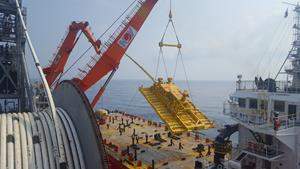
The US-based offshore oil services company had executed the work under an engineering, procurement, construction and installation (EPCI) contract it had won in consortium with L&T Hydrocarbon Engineering (LTHE) from ONGC in December 2015.
The Vashishta and S1 fields are located in the Krishna Godavari Basin (KG Basin), 35km off the coast of Amalapuram coast in Andhra Pradesh, India.
While the Vashishta field is projected to yield 9.56 billion cubic metres (bcm) over a period of nine years, the S1 field is anticipated to produce 6.22bcm over a period of eight years.
Under the scope of their contract, McDermott and LTHE had handled the engineering, supply and installation of a number of pipeline end terminations (PLETs) and in-line tee structures (ILTs) along with a pipeline end manifold structure (PLEM), rigid jumpers and nearly 50km of umbilicals.
The contract included 93km of 14inch dual rigid pipelines extending from the shallow water shore line to a maximum water depth of 700m.
McDermott used the Derrick Barge 30, Lay Vessel North Ocean 105 and North Ocean 102 specialty vessels to complete the installation phase.
McDermott Vashishta project director Ben Delves said: “Engineering design for the Vashishta project was no easy feat due to the iterative nature of the design process which had to reconcile many factors such as soil conditions, jumper/spool loads, connector capacities, in-place environmental loads, pipeline expansion loads, installation weather limitations, vessel envelope constraints and mission equipment constraints.”
Recently, TechnipFMC said that it has commissioned ONGC’s onshore gas terminal plant in Odalarevu, Andhra Pradesh, which will store and process the gas produced from the three offshore wells of the Vashishta and S1 development.






